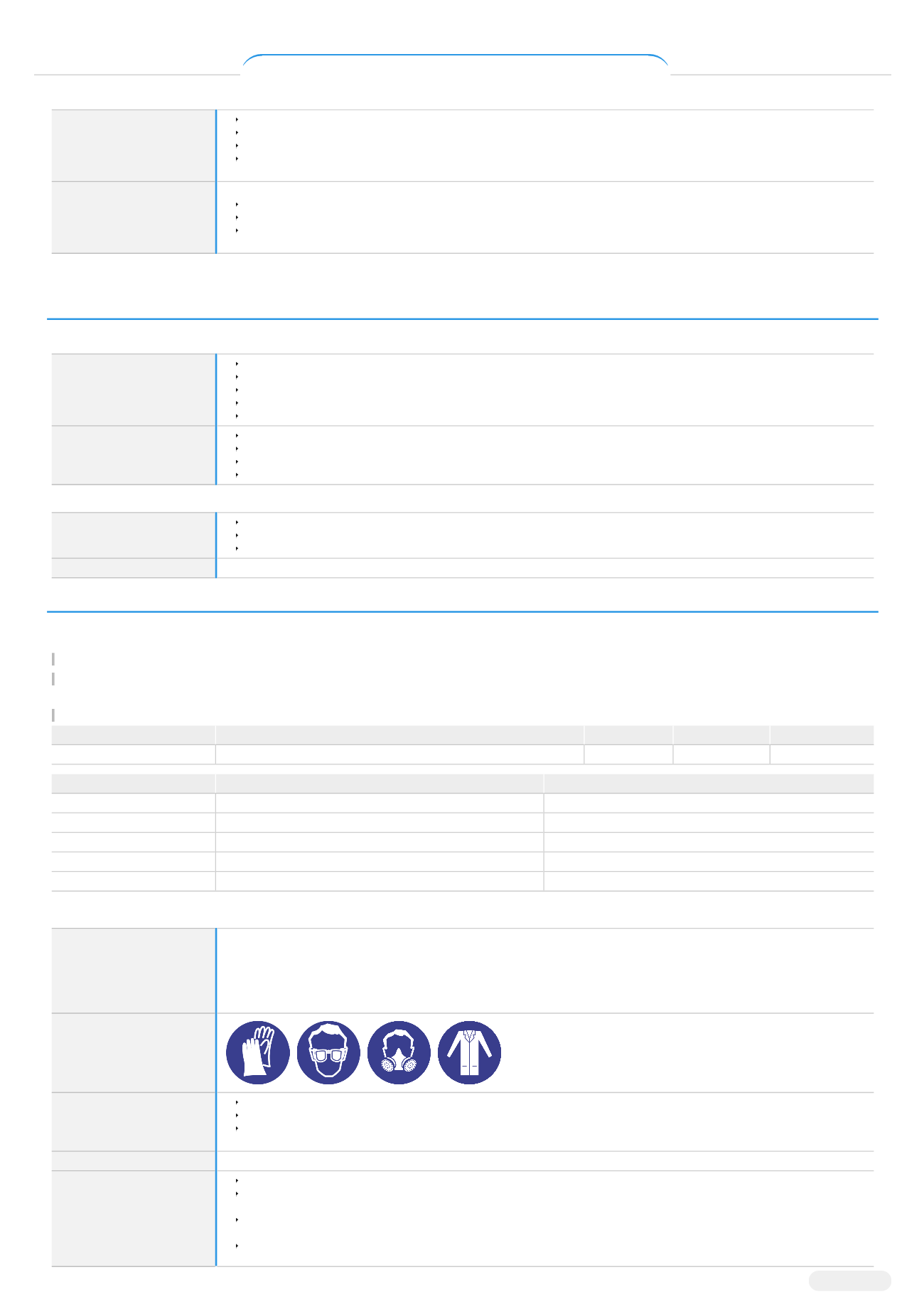

Minor Spills
Clean up all spills immediately.
Avoid breathing vapours and contact with skin and eyes.
Control personal contact with the substance, by using protective equipment.
Contain and absorb spill with sand, earth, inert material or vermiculite.
Slippery when spilt.
Major Spills
Moderate hazard.
Clear area of personnel and move upwind.
Alert Fire Brigade and tell them location and nature of hazard.
Wear breathing apparatus plus protective gloves.
Slippery when spilt.
Personal Protective Equipment advice is contained in Section 8 of the SDS.
SECTION 7 HANDLING AND STORAGE
Precautions for safe handling
Safe handling
DO NOT
allow clothing wet with material to stay in contact with skin
Limit all unnecessary personal contact.
Wear protective clothing when risk of exposure occurs.
Use in a well-ventilated area.
Avoid contact with incompatible materials.
Other information
Store in original containers.
Keep containers securely sealed.
Store in a cool, dry, well-ventilated area.
Store away from incompatible materials and foodstuff containers.
Conditions for safe storage, including any incompatibilities
Suitable container
Polyethylene or polypropylene container.
Packing as recommended by manufacturer.
Check all containers are clearly labelled and free from leaks.
Storage incompatibility
None known
SECTION 8 EXPOSURE CONTROLS / PERSONAL PROTECTION
Control parameters
OCCUPATIONAL EXPOSURE LIMITS (OEL)
INGREDIENT DATA
Not Available
EMERGENCY LIMITS
Ingredient
Material name
TEEL-1
TEEL-2
TEEL-3
trisodium phosphate
Trisodium phosphate; (Sodium phosphate, tribasic)
5 mg/m3
66 mg/m3
400 mg/m3
Ingredient
Original IDLH
Revised IDLH
trisodium phosphate
Not Available
Not Available
coconut diethanolamide
Not Available
Not Available
cocamidopropylbetaine
Not Available
Not Available
preservative
Not Available
Not Available
water
Not Available
Not Available
Exposure controls
Appropriate engineering
controls
Engineering controls are used to remove a hazard or place a barrier between the worker and the hazard. Well-designed engineering controls can be
highly effective in protecting workers and will typically be independent of worker interactions to provide this high level of protection.
The basic types of engineering controls are:
Process controls which involve changing the way a job activity or process is done to reduce the risk.
Enclosure and/or isolation of emission source which keeps a selected hazard "physically" away from the worker and ventilation that strategically "adds" and
"removes" air in the work environment.
Personal protection
Eye and face protection
Safety glasses with side shields.
Chemical goggles.
Contact lenses may pose a special hazard; soft contact lenses may absorb and concentrate irritants. A written policy document, describing the wearing
of lenses or restrictions on use, should be created for each workplace or task.
Skin protection
See Hand protection below
Hands/feet protection
Wear chemical protective gloves, e.g. PVC.
Wear safety footwear or safety gumboots, e.g. Rubber
NOTE:
The material may produce skin sensitisation in predisposed individuals. Care must be taken, when removing gloves and other protective equipment, to
avoid all possible skin contact.
Contaminated leather items, such as shoes, belts and watch-bands should be removed and destroyed.
Chemwatch:
4789-88
Version No:
3.1.1.1
Page
3
of
8
NV Chemicals Sugar Soap Liquid
Issue Date:
26/01/2018
Print Date:
31/01/2018
Continued...


















